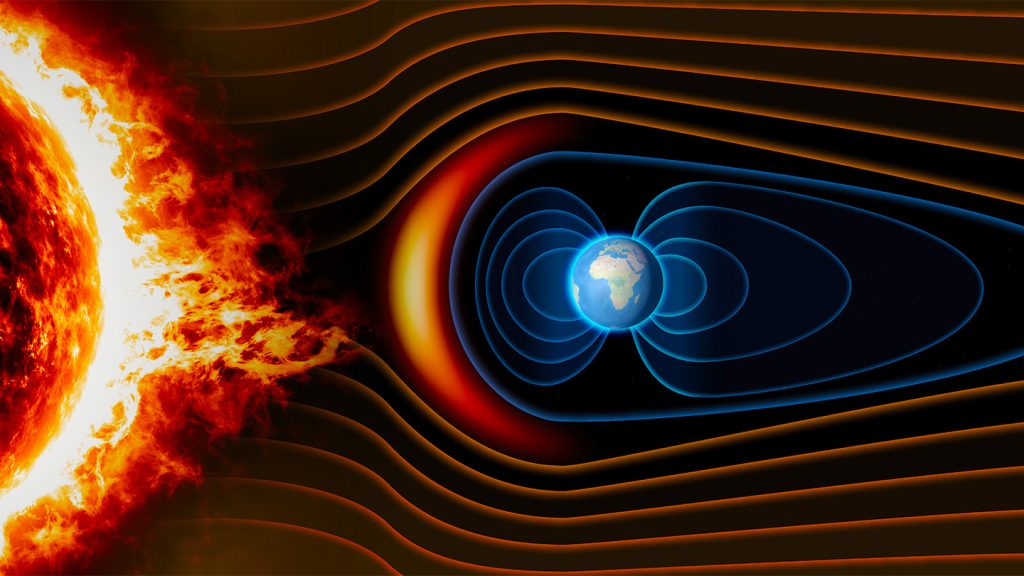Between 590 to 565 million years ago, Earth’s magnetic field weakened significantly, as indicated by rock samples found in Canada and Brazil. During this time, the magnetic field was only a fraction of its current strength, reaching the lowest values ever recorded for the planet. This weakening coincided with the Ediacaran Period when Earth’s atmosphere and oceans experienced a surge in oxygen levels. It was also a period when macroscopic marine animals began to emerge, suggesting a correlation between the weakened magnetic field, increase in oxygen, and the proliferation of larger marine life forms.
The weakening of Earth’s magnetic field could have led to decreased protection from cosmic radiation, allowing energetic particles to interact with water molecules in the atmosphere. This interaction would have resulted in the release of hydrogen into space, leaving behind an oxygen-rich atmosphere and oceans. The presence of higher oxygen levels would have provided the ideal conditions for larger, more complex marine animals to thrive, as they require more oxygen to sustain their size and mobility. This connection between the weakening of the magnetic field, oxygen enrichment, and the evolution of larger marine organisms sets the stage for the development of complex life forms on Earth.
The fluctuations in Earth’s magnetic field are part of a natural process, with periods of weakening occurring over thousands to millions of years. The magnetic field has experienced reversals in the past, but the extreme weakening observed in the rocks from Canada and Brazil represents a unique event in Earth’s history. The evidence suggests that the magnetic field almost collapsed during the Ediacaran Period, contributing to the significant changes in atmospheric composition and marine life development during that time. While the link between the magnetic field strength, oxygen levels, and the emergence of larger marine organisms requires further investigation, the findings present a compelling argument for interconnected environmental factors shaping the evolution of life on Earth.
The study’s findings shed light on the profound impact of Earth’s magnetic field on the planet’s evolution and the development of life forms. By analyzing rock samples from different periods, researchers can uncover pivotal moments in Earth’s history when environmental conditions drastically changed, leading to the emergence of new life forms. The research contributes to our understanding of the complex interactions between geological, atmospheric, and biological processes that have shaped the planet over millions of years.
The team’s work presents a comprehensive analysis of the relationship between Earth’s magnetic field strength, oxygen levels in the atmosphere and oceans, and the evolution of marine organisms during the Ediacaran Period. The study highlights the importance of considering multiple factors in understanding the environmental conditions that influenced the development and diversification of life on Earth. By examining geological records and reconstructing past events, scientists can piece together the intricate puzzle of Earth’s history and unravel the mysteries of how life evolved in response to changing planetary conditions.
Overall, the research underscores the interconnected nature of Earth’s systems and the profound influence of environmental factors on the evolution of life on the planet. By investigating the magnetic field’s fluctuations and their impact on atmospheric composition and marine life development, scientists can gain valuable insights into the processes that have shaped Earth’s history. The study opens up new avenues for exploring the intricate relationships between geological processes, environmental changes, and the evolution of life forms, providing a deeper understanding of Earth’s complex and dynamic past.















